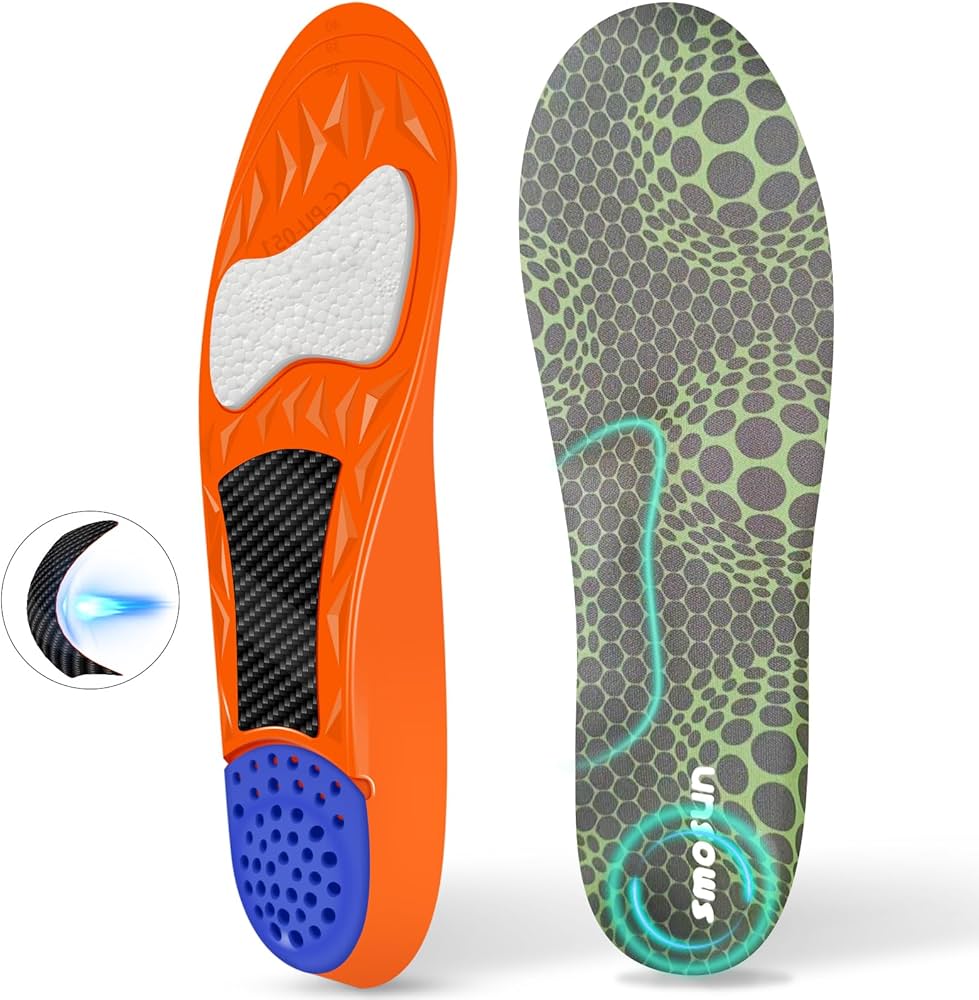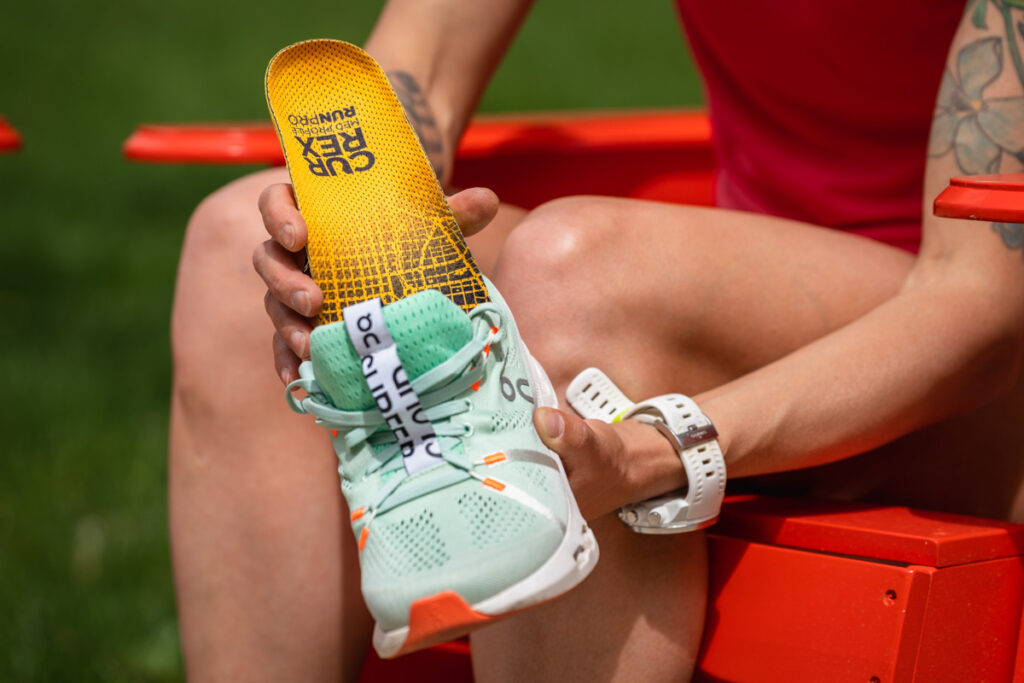The Best Insoles for Running: Comfort, Support, and Performance

Finding the perfect insoles for running can make a significant difference in your performance and overall comfort. Whether you’re a seasoned marathoner or just starting out, the right insoles can provide the support and cushioning you need to prevent injuries and enhance your running experience. With various options available, it can be challenging to choose the best insoles for your specific needs. This guide will help you understand what to look for in running insoles and provide recommendations for different types of runners. By considering factors like arch support, cushioning, and material quality, you can make an informed decision that will keep you comfortable and injury-free on your runs.
1. Understanding the Importance of Insoles
a. Benefits of Using Insoles
Insoles play a crucial role in enhancing running comfort and performance. They provide additional cushioning, helping to absorb shock and reduce pressure on your feet. This can prevent common running injuries such as plantar fasciitis, shin splints, and joint pain. Insoles also improve foot alignment, contributing to better posture and reducing strain on the lower body.
b. Types of Insoles
There are various types of insoles available, each designed to address different needs. Cushioned insoles focus on shock absorption and comfort, while stability insoles offer extra support for flat feet or overpronation. Arch-support insoles are tailored for those with high arches, providing the necessary support to prevent pain and discomfort. Heat-moldable insoles can be customized for a personalized fit, making them a great option for runners with specific foot issues.
c. Custom vs. Off-the-Shelf Insoles
Custom insoles are designed specifically for your feet and can address specific biomechanical needs. However, they tend to be more expensive than off-the-shelf options. Off-the-shelf insoles are more affordable and available in a wide range of styles and features, making them a popular choice for most runners. When choosing between the two, consider your budget, specific foot needs, and the frequency of your runs.
2. Choosing the Right Insoles for Your Feet

a. Identifying Your Foot Type
To choose the best insoles, you must first identify your foot type. Common foot types include flat feet, neutral arches, and high arches. Flat feet require insoles with strong arch support to prevent overpronation, while high arches benefit from cushioned insoles that offer additional shock absorption. Neutral arches can typically use a standard insole with moderate support and cushioning.
b. Assessing Your Running Style
Your running style also plays a role in determining the best insoles for you. Consider factors such as your typical running distance, terrain, and frequency. Long-distance runners might prioritize cushioning and shock absorption, while trail runners may need insoles with more stability and support. Additionally, understanding whether you overpronate or supinate can help you select insoles that promote better foot alignment and reduce injury risk.
c. Materials and Construction
The materials and construction of insoles can significantly impact their effectiveness and durability. Common materials include foam, gel, and cork. Foam insoles provide lightweight cushioning and support, making them ideal for long runs. Gel insoles offer excellent shock absorption and are suitable for runners seeking extra cushioning. Cork insoles are durable and provide natural support, though they may be less cushioned than other materials.
3. Top Insoles for Runners
a. Superfeet Green Insoles
Superfeet Green Insoles are popular among runners for their robust support and cushioning. They feature a high-density foam that provides excellent shock absorption and support for flat and neutral arches. The structured heel cup helps stabilize the foot and improve alignment, reducing the risk of injury. These insoles are ideal for long-distance runners seeking durability and comfort.
b. Powerstep Pinnacle Insoles
Powerstep Pinnacle Insoles offer a balanced combination of support and cushioning. They feature a dual-layer cushioning system with a firm arch support structure, making them suitable for runners with mild overpronation. The antimicrobial top fabric helps reduce friction and heat, enhancing comfort during long runs. These insoles are versatile and can be used for various running styles and distances.
c. Sof Sole Athlete Insoles
Sof Sole Athlete Insoles are known for their gel cushioning and moisture-wicking properties. They offer excellent shock absorption and are designed for runners with neutral arches. The gel pads in the heel and forefoot provide targeted cushioning, while the breathable fabric keeps feet cool and dry. These insoles are a great option for runners looking for comfort and moisture control.
4. Tips for Using and Maintaining Insoles
a. Proper Insole Fitting
To ensure maximum comfort and effectiveness, it’s crucial to fit your insoles properly. Trim the insoles to match the size of your shoes, following the provided guidelines. Make sure they fit snugly without sliding inside the shoe. When fitting custom insoles, follow the manufacturer’s instructions for molding and adjustment to achieve the best results.
b. Caring for Your Insoles
Maintaining your insoles can extend their lifespan and keep them effective. Remove them from your shoes after each run to allow them to air out and prevent odor buildup. Clean them regularly with a mild detergent and let them dry naturally. Avoid exposing them to direct sunlight or heat, as this can damage the materials and reduce their cushioning properties.
c. Knowing When to Replace Insoles
Insoles can wear out over time, losing their support and cushioning capabilities. Signs that it’s time to replace your insoles include visible wear and tear, loss of cushioning, and persistent foot discomfort during runs. On average, insoles should be replaced every six to twelve months, depending on your running frequency and intensity.
5. How to Maximize Performance with Insoles
a. Combining Insoles with Proper Footwear
Insoles work best when paired with suitable running shoes. Choose shoes that complement the support and cushioning features of your insoles. Ensure that your shoes fit properly and provide adequate support for your running style. Together, the right shoes and insoles can significantly enhance your performance and comfort.
b. Listening to Your Body
Pay attention to any discomfort or pain you experience while running. If you notice issues like persistent pain, blisters, or numbness, it may be a sign that your insoles or shoes are not suitable for your needs. Adjust your insoles or consult with a podiatrist or running specialist to address these issues and find a solution that works for you.
c. Gradually Adjusting to New Insoles
When transitioning to new insoles, it’s important to give your body time to adjust. Start by wearing the insoles for short runs, gradually increasing the duration and intensity as your feet adapt. This will help prevent discomfort and allow your body to acclimate to the new support and cushioning.
Conclusion
Choosing the best insoles for running can enhance your comfort, performance, and injury prevention. By understanding your foot type, running style, and specific needs, you can select insoles that provide the right balance of support and cushioning. Consider options like Superfeet Green, Powerstep Pinnacle, and Sof Sole Athlete, which offer various features for different running preferences. Remember to fit your insoles correctly and maintain them to ensure long-lasting effectiveness. With the right insoles and proper care, you can enjoy a more comfortable and enjoyable running experience. Always listen to your body and make adjustments as needed to maximize your performance and keep your feet healthy.
FAQs
1. What are the best insoles for flat feet?
For flat feet, look for insoles with strong arch support and stability features, such as Superfeet Green or Powerstep Pinnacle.
2. Can insoles help prevent running injuries?
Yes, insoles can help prevent injuries by providing cushioning, support, and improved foot alignment, reducing stress on the feet and lower body.
3. How often should I replace my insoles?
Replace your insoles every six to twelve months or when you notice visible wear, loss of cushioning, or persistent discomfort during runs.
4. Are custom insoles worth the investment?
Custom insoles can be beneficial for addressing specific biomechanical needs and foot issues, but they are more expensive than off-the-shelf options.
5. Can I use the same insoles for different types of shoes?
Yes, many insoles are versatile and can be used in different types of shoes, but ensure they fit properly and provide the necessary support for each shoe.

1 thought on “Best Insoles for Running”